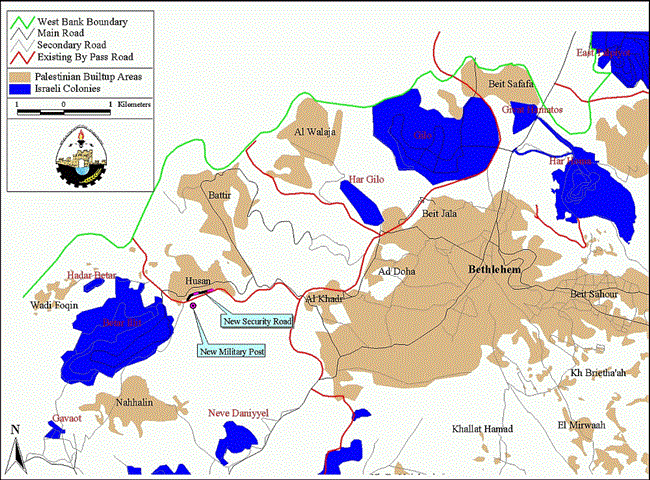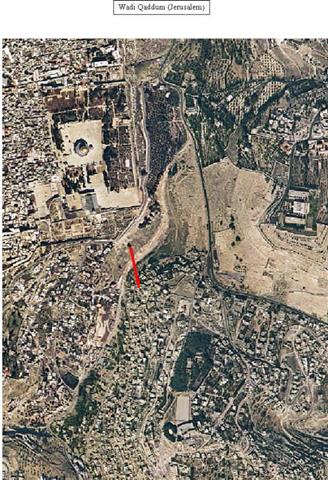Just three kilometers west of Bethlehem, near the 1949 Armistice line (green line), lies the Palestinian village of Husan; see map. The people of Husan live with the threat presented by the expansion of Betar settlement to its south. The settlement was established in 1985 and has grown since then on land confiscated from Husan and Nahhalin villages. Husan village has been prevented from southward growth for decades by a mine field laid by the Jordanian military prior to the Israeli conquest of the west bank in the 1967 war. For many years the residents of Husan have asked for the minefield to be cleared by the Israeli army, who is the responsible party as the occupying military force. But the Israeli army seems to be interested clearing the mines only when it suits their colonial goals. Following Betar settlement's establishment the occupation forces built a by-pass road on the southern edge of Husan to provide easy passage for Betar settlers to Jerusalem. They built the road straight through the minefield, clearing the necessary mines for the road while ignoring those on either side, completely dismissing the needs and desires of Husan residents. . The people of Husan live with the threat presented by the expansion of Betar settlement to its south. The settlement was established in 1985 and has grown since then on land confiscated from Husan and Nahhalin villages. Husan village has been prevented from southward growth for decades by a mine field laid by the Jordanian military prior to the Israeli conquest of the west bank in the 1967 war. For many years the residents of Husan have asked for the minefield to be cleared by the Israeli army, who is the responsible party as the occupying military force. But the Israeli army seems to be interested clearing the mines only when it suits their colonial goals. Following Betar settlement's establishment the occupation forces built a by-pass road on the southern edge of Husan to provide easy passage for Betar settlers to Jerusalem. They built the road straight through the minefield, clearing the necessary mines for the road while ignoring those on either side, completely dismissing the needs and desires of Husan residents.
In June of 2001 the Israelis cleared two more sections of the minefield. On a hilltop immediately south of the by-pass road the Israeli army established a new military post after clearing the mines in that area. At this point the post consists of a tower and concrete blockades. But construction continues on the hilltop and it is feared that, in a common pattern of colonization, the military post serves as a precedent for expanding Betar settlement northward to the edge of Husan; see photo 1. In addition, the Israeli forces cleared an area of the minefield between the by-pass road and Husan village to the north. Following the mine sweep, a swath of land was bulldozed for a new . In addition, the Israeli forces cleared an area of the minefield between the by-pass road and Husan village to the north. Following the mine sweep, a swath of land was bulldozed for a new security road just a couple dozen meters from homes in Husan; see photo 2. In this area between the security road and the built-up area of Husan the mines remain, just outside the doorsteps of Husan villagers.. In this area between the security road and the built-up area of Husan the mines remain, just outside the doorsteps of Husan villagers.
Although the Israeli army did not lay the landmines, it seems quite willing to use them to their advantage to keep the land south of Husan fallow until they are ready to expropriate it for its own use. Experiencing this blatant disregard for their safety or the needs of their village, in addition to seeing the increased militarization of the area due to the new military camp, gives Husan residents good reason to be cynical about Israel's rhetoric of a withdraw of the Israeli army to pre-Intifada positions.
Prepared by:
The Applied Research Institute – Jerusalem

















